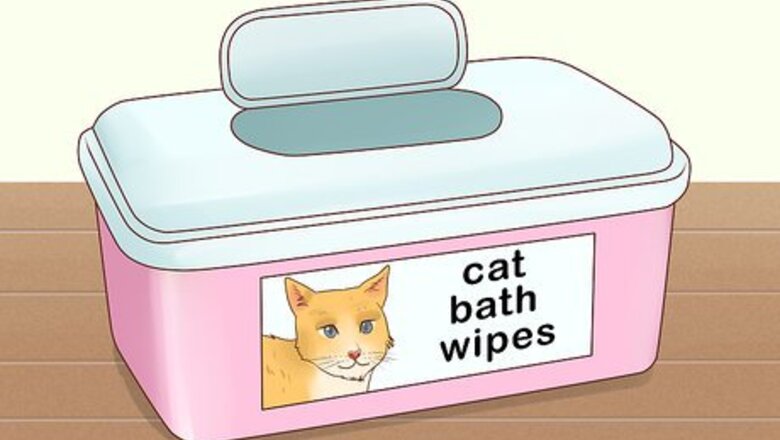
views
Cleaning Your Cat With Wipes
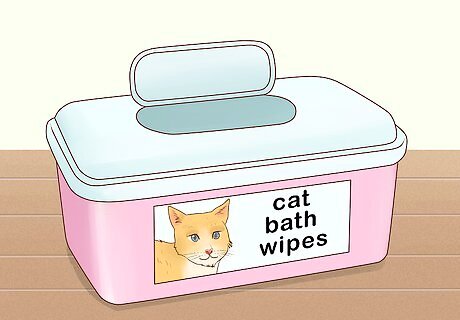
Purchase cat bath wipes. Cat bath wipes deodorize your cat’s coat while removing allergens and distributing essential oils. Wipes can be purchased online or at most pet stores. Opt for a veterinarian-recommended brand of wipes that has natural ingredients (e.g. aloe, lavender) and is alcohol-free.
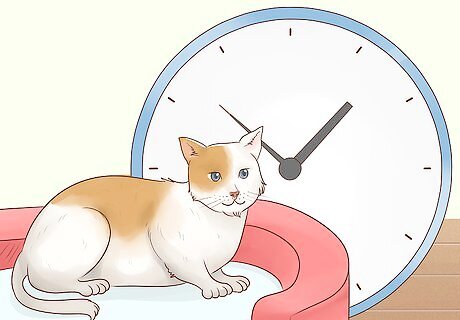
Choose a time when your cat is relaxed. Choose a time to clean your cat with cat bath wipes when it is relaxed. After playing or eating your cat is likely to be content and calm, making the grooming experience easier. If your cat seems agitated or distressed when you start to give it a waterless bath, stop and try again at another time to prevent negative associations.
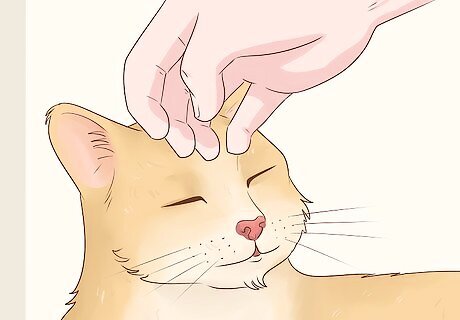
Pet your cat before introducing the wipes. To get your cat comfortable with the cleaning experience, start petting it before touching it with a cat bath wipe. Have the wipes next to you and try to phase seamlessly into rubbing your cat with them, keeping the rhythm and frequency of petting the same. For instance, pet your cat with your left hand while picking up a wipe with the right hand, then switch and continue petting your cat with the wipe.
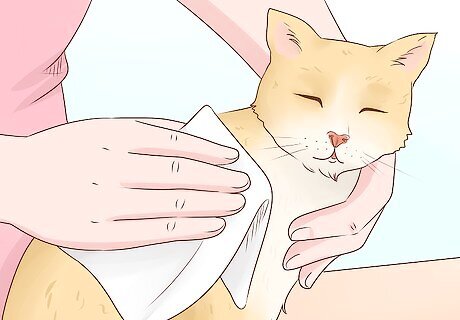
Massage your cat with the wipes. Make your cat’s waterless bath feel more like a massage by petting it while you use the wipes. Wipe your cat in long strokes to distribute its skin’s natural oils throughout its coat. Focus extra attention on spots your cat likes to be pet (e.g. behind its ears) to make the experience enjoyable.
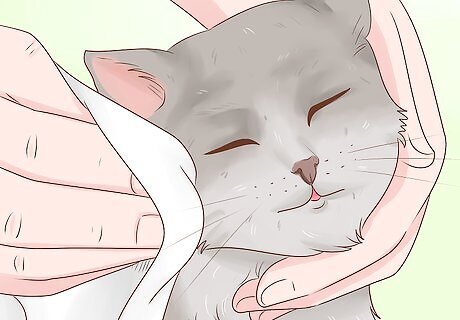
Clean your cat’s face and ears. Using a fresh wipe, gently clean your cat’s ears, eyes, and face. Gently brace your cat’s head with one hand (gently placed behind it) and softly dab away any debris or dirt. Reward your cat with treats, praise, and petting to create a positive association.
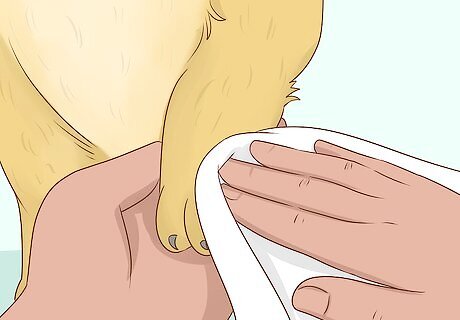
Wipe its paws. When using cat bath wipes on your pet, make sure to wipe its front and back paws as well. Your cat’s feet may pick up litter, dust, and residue from household chemicals on a daily basis. Even if you are not giving your cat a full cleaning with cat bath wipes, wipe down its paws every few days to ensure that they are clean.
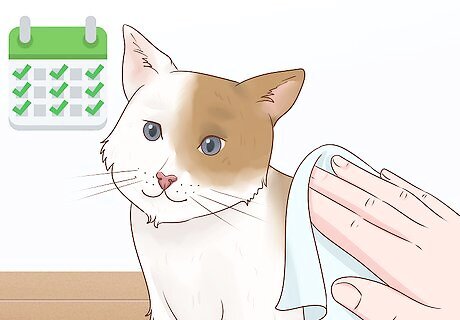
Use cat bath wipes sparingly. Do not use cat bath wipes more than once a day, as they can dry out your cat’s skin. In general, your cat should be able to keep itself clean by self-grooming and washing itself. Opt for a waterless bath in special circumstances such as: an injury or infection that requires your cat to wear an Elizabethan collar (e-collar) your cat being too obese to wash itself effectively your cat’s fur getting too dirty to effectively clean on its own your cat being too ill to groom itself your aging cat being too sore or stiff to wash itself properly
Using a Waterless Leave-in Shampoo

Choose a waterless cat shampoo. There are a variety of waterless pet shampoos on the market for cats that can’t stand water. Opt for an all-natural, non-toxic foam shampoo that will not dry out your cat’s skin. Look for a veterinarian recommended brand, or ask your veterinarian for advice about choosing the right product.
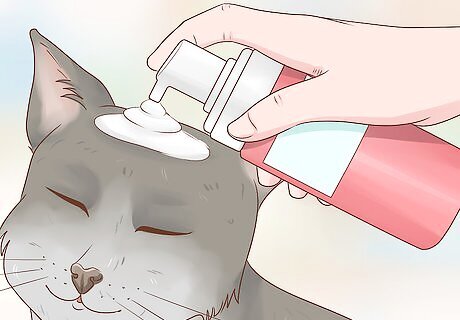
Apply the shampoo. Choose a time when your cat is relaxed to apply the shampoo. Read the instructions to see how much product to use, then distribute foam evenly throughout your cat’s coat. Massage your cat as you apply the shampoo to keep it calm and content.
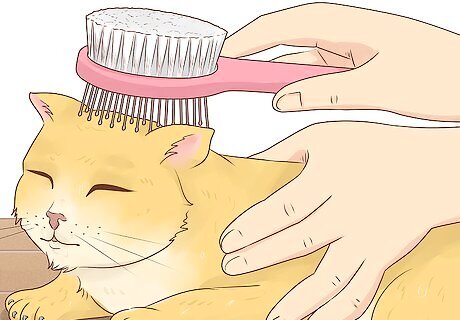
Remove excess foam. After distributing the foam evenly through your cat’s coat, remove any excess foam with your fingers and wash your hands. Brush the remaining shampoo through your cat’s coat with a pin brush. No rinsing is necessary.
Grooming Your Cat Regularly

Buy the right tools. Invest in quality grooming tools for your cat to help to keep its coat clean and healthy. Purchase a pin brush for either a short-haired or long-haired cat, and buy a de-matter and thinning shears to remove knots or tangles from a long-haired cat. A grooming glove may also be a good choice to remove loose hair if your cat does not like ordinary brushing.
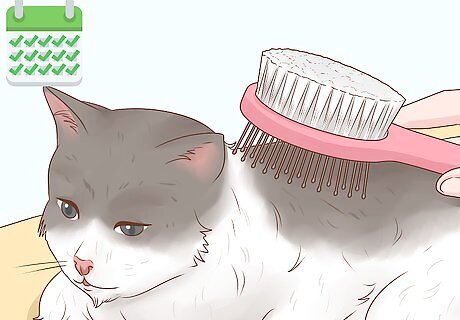
Brush your cat often. Brushing your cat can achieve many of the same benefits that waterless bathing provides, such as redistributing essential oils through the cat's coat. For short-haired cats, brush once week with a pin brush for basic maintenance, and for long haired cats, brush daily with a wide-tooth brush. Be very gentle while brushing around your cat's chest and belly.
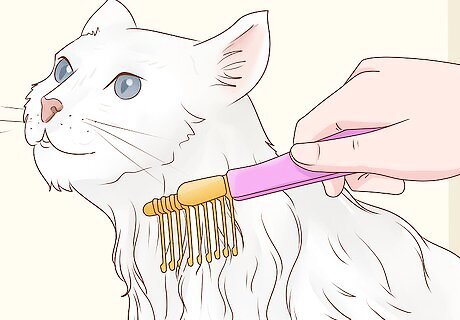
Getting rid of mats. To untangle mats in your cat's fur, use a de-matter or clippers (both available at pet stores or online) instead of scissors. The long prongs of the de-matter can tease knots out, while clippers can cut out tangles safely and easily. Be gentle and cautious when removing tangles to avoid harming your cat during the process.
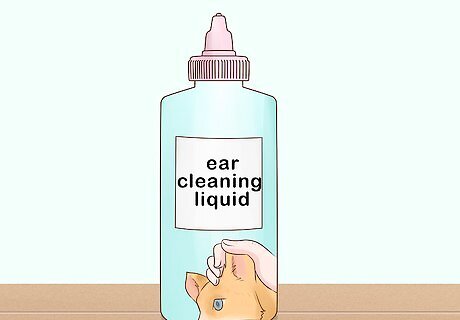
Keep your cat's ears clean. Clean your cat's ears regularly to help contribute to its overall hygiene. Buy an ear cleaning liquid from your veterinarian, or ask your veterinarian what cleaning liquid they recommend to buy from a pet store. Use a cotton ball to apply the ear cleaning liquid to the pinna, and let it dry and evaporate on its own. Always use ear cleaning liquid to clean your cat's ears instead of water, which can build up in your cat's ear canals.




















Comments
0 comment